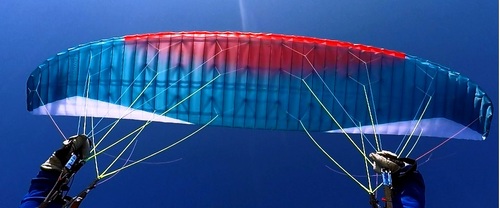ADVANCE Epsilon8 27 |
|||||||||||||||||||||||||||||||||||||||||||||||||||||||||||||||||||||||||||||||||||||||||||||||||||||||||||||||||||||||||||||||||||||


|
|||||||||||||||||||||||||||||||||||||||||||||||||||||||||||||||||||||||||||||||||||||||||||||||||||||||||||||||||||||||||||||||||||||
Instability rating |
|||||||||||||||||||||||||||||||||||||||||||||||||||||||||||||||||||||||||||||||||||||||||||||||||||||||||||||||||||||||||||||||||||||
|
|||||||||||||||||||||||||||||||||||||||||||||||||||||||||||||||||||||||||||||||||||||||||||||||||||||||||||||||||||||||||||||||||||||
Glider characteristics |
|||||||||||||||||||||||||||||||||||||||||||||||||||||||||||||||||||||||||||||||||||||||||||||||||||||||||||||||||||||||||||||||||||||
|
Launch preparations: average
launch characteristics: balanced, climbs constantly, no guidance necessary, good feedback during inflation, little braking required, slows before zenith, control check simple, low takeoff speed
asymmetric collapse: canopy colllapses at high angle to leading edge, high dynamics, total course change 90-180°, (1), very fast course change rate, high forward pitching 75-90°, (5), moderate height loss 30-39 m, (2), low sink velocity 10-14 m/s, (1), with tendency to cravat, (4), G-Force < 2,5 G, (1)
Frontal collapse: canopy collapses with high total collapse aera, moderate pitch backwards 30-45°, low pitch forwards <30°, moderate dynamics, no course change, (1), variable recovery behaviour, at times immediate, at times delayed, automatic recovery, (3), usually symmetric recovery, simple pilot action required, (4), horseshoe, wingtips at front, immediate return to normal airspeed, moderate height loss 30-39 m, (2), low sink velocity 10-14 m/s, (1)
Spiral dives: moderate sink velocity increase, Moderate G-Force 3,5- 4.0 G, (2), Sink velocity after 720° <18 m/s, (3), High maximum sink velocity < 22 m/s, (3), sink velocity increase < 6 m/s on brake release, (2), Course change 360-540° after spiral exit, (3), high height loss during recovery 60-100 m, (3)
B-Stall: normal force required, low pitch backwards <15°, moderate pitch forwards 15-30°, stable sink phase, no tendency to deform, immediate return to normal airspeed, 6-8 m/s, height loss on recovery 20-40 m
big ears: simple initiation, stable flight phase, immediate automatic recovery, Vsink unaccelerated 2,5-3 m/s, Vsink accelerated 3,5-4 m/s, Vunaccelerated 0-3 km/h less than trimspeed, Vaccelerated 3-5 km/h faster than trimspeed
Steering behaviour: agile, 80 cm brake travel range, very noticable brake pressure increasse, normal stall point, easily identifiable |
|||||||||||||||||||||||||||||||||||||||||||||||||||||||||||||||||||||||||||||||||||||||||||||||||||||||||||||||||||||||||||||||||||||
Notes |
|||||||||||||||||||||||||||||||||||||||||||||||||||||||||||||||||||||||||||||||||||||||||||||||||||||||||||||||||||||||||||||||||||||
Rating |
|||||||||||||||||||||||||||||||||||||||||||||||||||||||||||||||||||||||||||||||||||||||||||||||||||||||||||||||||||||||||||||||||||||
|
Safety class 5 This class of paraglider reacts very demandingly to one or more of the following manoeuvres: frontal collapse, asymmetric collapse or spiral dive and may present pilots with a particular challenge.Very demandingly means that the above manoeuvres result in highly dynamic reactions from the glider, and/or large height losses. Critical subsequent glider reactions are also to be expected. Expert piloting skills achieved through constant practice, fast personal reaction times and precise pilot inputs are required to be able to immediately react to the above manoeuvres to maintain flight control and prevent large height loss or subsequent critical glider reactions. In particular, pilots should be able to recognise the onset of the above manoeuvres and be able to prevent or minimise their effects through immediate and precise pilot inputs. |
|||||||||||||||||||||||||||||||||||||||||||||||||||||||||||||||||||||||||||||||||||||||||||||||||||||||||||||||||||||||||||||||||||||

